
Starting June 1st, 2023 Our warehouse fee will be $0.65/cubic foot per month
In effort to lower the warehouse storage fee during inflation, we have went narrow aisle racking.This construction took us four months but the project is finally completed. With narrow aisle racking, we are able to drop storage by 24%.We as partners will go through this inflation together.
08/15/2024
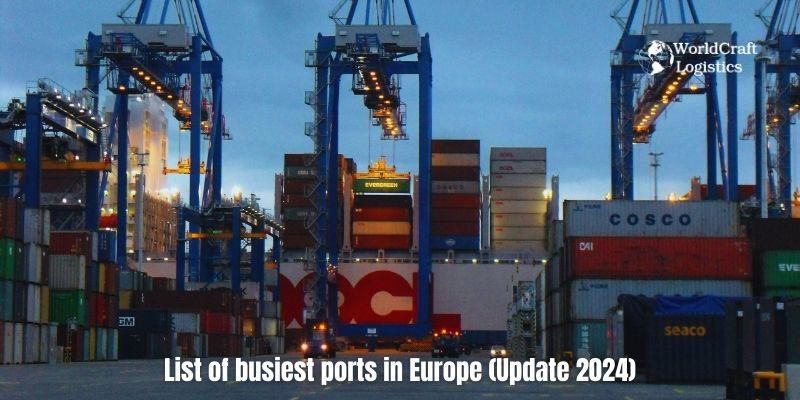
Europe, a powerhouse of global trade and logistics, is home to some of the largest and busiest ports in the world. These ports serve not only as vital gateways between nations but also as the beating heart of economic activity, where a constant flow of goods fuels prosperity across the continent. Among them, the largest port in Europe stands out with its immense scale, cutting-edge technology, and unmatched operational capacity, playing a pivotal role in the global supply chain. This port is not just a symbol of impressive growth but also a testament to the continuous innovation driving Europe's maritime industry forward.
Our other post has related content, please read here: 👉 Top 10+ largest sea ports in the US with billions of USD/year revenue
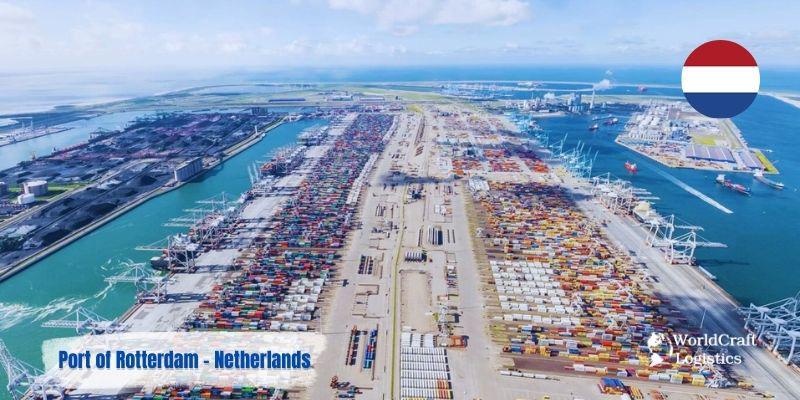
The Port of Rotterdam, located in the Netherlands, is the largest port in Europe and one of the busiest in the world. It serves as a major gateway for goods entering and leaving Europe, handling a vast range of cargo, including containers, bulk goods, and oil. The port is strategically situated on the North Sea, providing direct access to the heart of Europe via an extensive network of rivers, railways, and roads.
Key features of the Port of Rotterdam include:
✔️ Annual Cargo Tonnage: 438.8 million tons.
✔️ Scale and Capacity: The port covers over 12,500 hectares with deep-water berths for the world's largest ships, including ULCVs.
✔️ Connectivity: It serves as a major hub for maritime, rail, road, and inland shipping routes across Europe, ensuring efficient logistics.
✔️ Innovation and Sustainability: The port is a leader in digital transformation and sustainability, focusing on carbon reduction and sustainable energy like hydrogen and offshore wind.
✔️ Economic Impact: It plays a crucial role in the Dutch and European economies, supporting industries like manufacturing, logistics, and energy, and providing significant employment.
✔️ Expansion and Development: Ongoing projects, such as Maasvlakte 2, are increasing the port's capacity to meet future demands.
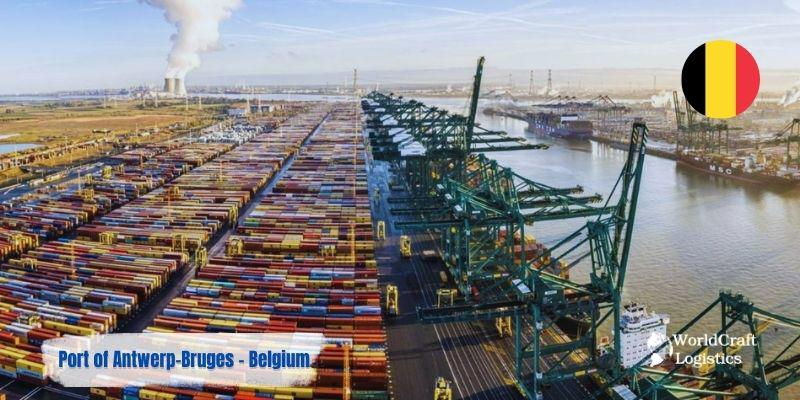
The Port of Antwerp-Bruges, located in Belgium, is one of Europe's most important and strategic ports. Formed from the merger of the ports of Antwerp and Zeebrugge, it ranks as one of the largest in Europe, handling a wide range of cargo, including containers, vehicles, bulk goods, and energy products. The port serves as a crucial gateway for trade between Europe and the rest of the world, with strong connections to global shipping routes.
Key features of the Port of Antwerp-Bruges include:
✔️ Annual Cargo Tonnage: 271 million tons.
✔️ Strategic Location: Centrally located in Europe with direct access to key markets and industrial centers.
✔️ Diverse Cargo Handling: Versatile in managing containers, vehicles, break bulk, and liquid bulk goods, including chemicals and petroleum.
✔️ Connectivity: Strong rail, highway, and inland waterway networks for efficient transport across Europe.
✔️ Sustainability Initiatives: Focuses on emission reduction, green energy, and circular economy projects.
✔️ Economic Significance: A key player in the Belgian and European economies, supporting industries like automotive, chemicals, and logistics.
✔️ Expansion and Development: Ongoing investments in infrastructure and technology to meet future trade demands.
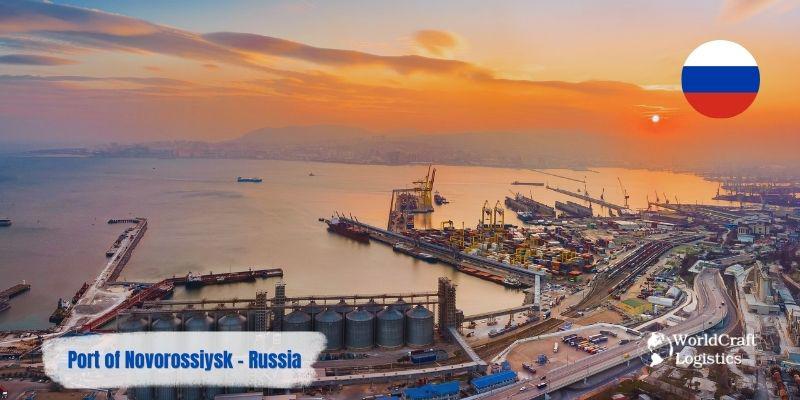
The Port of Novorossiysk, located on the Black Sea coast in Russia, is one of the country's largest and most significant ports. It serves as a key maritime gateway for Russian exports and imports, handling a substantial portion of the nation's seaborne trade. The port's strategic location makes it an essential hub for connecting Russia with global markets, particularly in Europe, Asia, and the Middle East.
Key features of the Port of Novorossiysk include:
✔️ Annual Cargo Tonnage: 161.4 million tons.
✔️ Strategic Location: Located on the Black Sea, it connects Russia to international shipping routes and global markets.
✔️ Cargo Diversity: Handles bulk commodities (grain, coal), crude oil, petroleum products, containers, and general cargo.
✔️ Energy Exports: A key hub for Russia's oil and petroleum exports.
✔️ Infrastructure: Equipped with modern facilities, deep water berths, and extensive storage for efficient cargo handling.
✔️ Economic Importance: Plays a vital role in Russia’s economy, supporting energy, agriculture, and manufacturing industries.
✔️ Expansion and Development: Ongoing infrastructure and technology investments to boost capacity and efficiency.
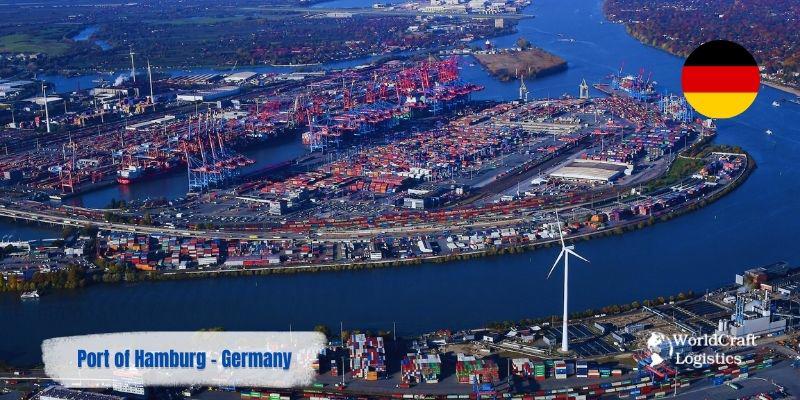
The Port of Hamburg, located in northern Germany, is one of Europe’s largest and busiest ports. It serves as a major gateway for trade between Europe and the world, particularly Asia. The port is renowned for its advanced infrastructure, efficiency, and extensive connectivity, making it a crucial hub in global logistics.
Key features of the Port of Hamburg include:
✔️ Annual Cargo Tonnage: 114.3 million tons.
✔️ Strategic Location: Located on the Elbe River, 100 km inland from the North Sea, with direct access to central European markets.
✔️ Container Handling: A leading European container port with efficient terminals for large ships and high cargo volumes.
✔️ Connectivity: Strong road, rail, and inland waterway links to major industrial and commercial centers across Europe.
✔️ Innovation and Sustainability: A pioneer in digitalization and green technologies to minimize environmental impact.
✔️ Economic Impact: A significant contributor to the German economy, supporting manufacturing, logistics, and trade.
✔️ Expansion and Development: Ongoing infrastructure and technology investments to boost capacity, efficiency, and sustainability.
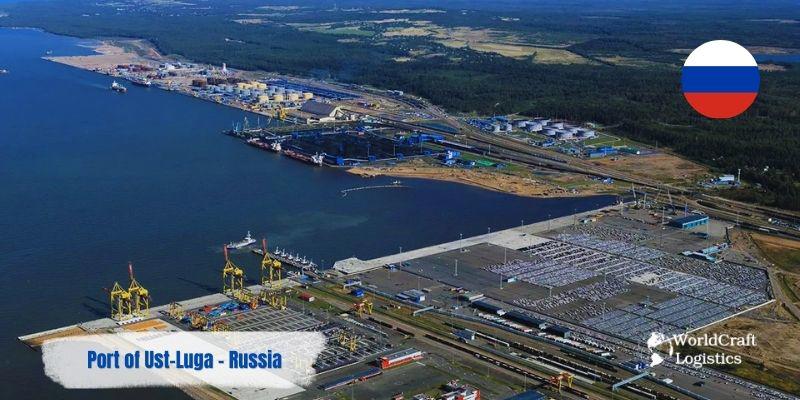
The Port of Ust-Luga, located on the Gulf of Finland in northwest Russia, is one of the country’s fastest-growing and most modern seaports. It plays a significant role in Russian maritime trade, particularly for bulk goods and energy exports. As a deepwater port, Ust-Luga is designed to handle large vessels, and its strategic location makes it a key hub for accessing European and global markets.
Key features of the Port of Ust-Luga include:
✔️ Annual Cargo Tonnage: 112.5 million tons.
✔️ Strategic Location: Near the Baltic Sea, offering direct access to European shipping routes and serving as a gateway for Russian exports.
✔️ Deepwater Port: Equipped with deep water berths for large ships, facilitating efficient handling of heavy cargo.
✔️ Cargo Diversity: Handles a wide range of cargo, including coal, oil, natural gas, fertilizers, and automobiles, with a focus on energy exports.
✔️ Modern Infrastructure: Features state-of-the-art facilities and extensive storage with specialized terminals.
✔️ Economic Significance: A key contributor to Russia’s economy, supporting energy, mining, and logistics industries.
✔️ Expansion and Development: Rapid growth with ongoing investments to increase capacity and strengthen its role as a maritime hub.
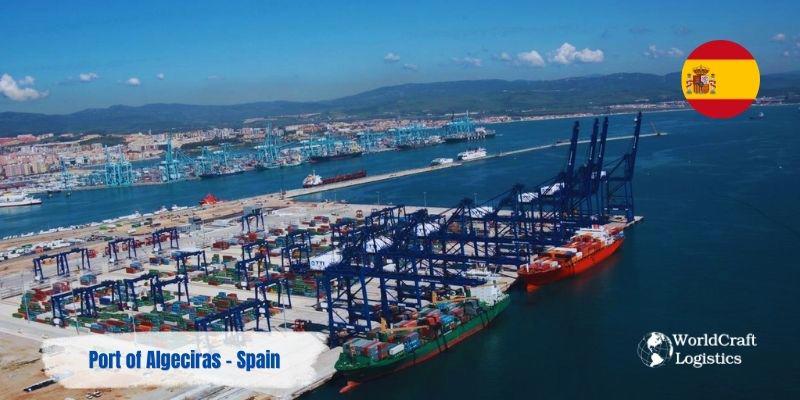
The Port of Algeciras, located in southern Spain, is one of the largest and busiest ports in the Mediterranean and Europe. Its strategic position at the crossroads of key shipping routes between Europe, Africa, and Asia makes it a vital hub for global maritime trade. The port is renowned for its efficiency, advanced infrastructure, and extensive connectivity.
Key features of the Port of Algeciras include:
✔️ Annual Cargo Tonnage: 107 million tons.
✔️ Strategic Location: At the entrance to the Mediterranean Sea near the Strait of Gibraltar, crucial for trade between Europe, Africa, and Asia.
✔️ Container Handling: Major transshipment hub, handling millions of containers annually and integral to global supply chains.
✔️ Connectivity: Excellent links to major shipping routes, and road, rail, and inland transport networks for efficient goods movement.
✔️ Diverse Cargo: Handles containers, liquid bulk (oil and chemicals), dry bulk, vehicles, and general cargo.
✔️ Economic Impact: A key port for Spain, supporting logistics, manufacturing, and energy industries.
✔️ Innovation and Sustainability: Focused on sustainability and innovation with green technologies and digital solutions to improve efficiency and reduce environmental impact.
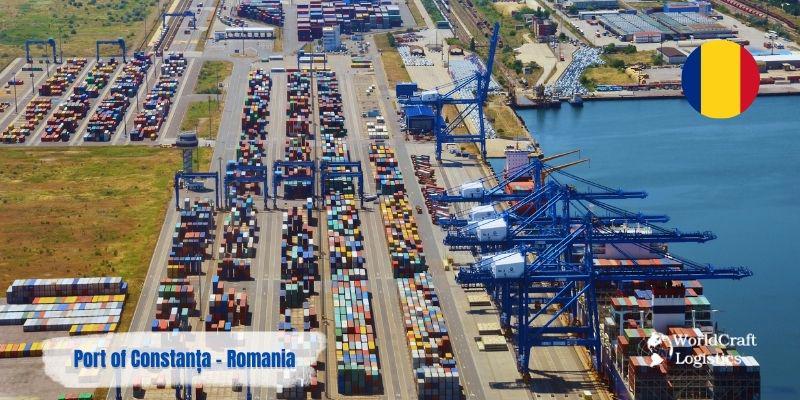
The Port of Constanța, located on the western coast of the Black Sea in Romania, is one of the largest and most important ports in the region. It serves as a critical gateway for trade between Europe and the Black Sea, and is a key hub for cargo handling in southeastern Europe.
Key features of the Port of Constanța include:
✔️ Annual Cargo Tonnage: 92.5 million tons.
✔️ Strategic Location: On the Black Sea coast, providing access to the Black Sea region and serving as a gateway to Eastern Europe and Central Asia.
✔️ Cargo Diversity: Handles containers, bulk goods (grain and coal), oil and petroleum products, and general cargo.
✔️ Deepwater Facilities: Equipped with deep water berths for large vessels, including bulk carriers and tankers.
✔️ Connectivity: Strong links to road, rail, and inland waterways for efficient cargo movement across Europe.
✔️ Economic Importance: A key contributor to Romania’s economy, supporting agriculture, energy, and manufacturing industries.
✔️ Expansion and Development: Ongoing investments to enhance capacity and infrastructure, boosting global competitiveness.
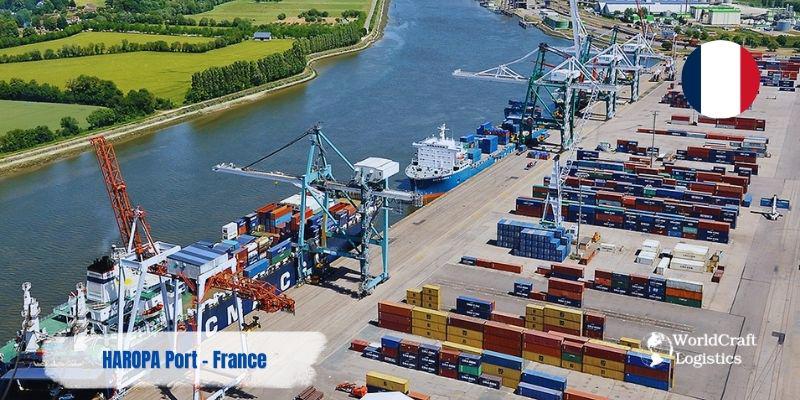
HAROPA Port, a major port complex in France, is a key maritime gateway that combines the ports of Le Havre, Rouen, and Paris into a single integrated entity. This collaboration enhances the efficiency and connectivity of the port system, making it one of the most significant ports in Europe. HAROPA serves as a crucial hub for trade and logistics in the region.
Key features of HAROPA Port include:
✔️ Annual Cargo Tonnage: 81.3 million tons.
✔️ Strategic Location: Along the Seine River with access to the English Channel, connecting northern Europe to global shipping routes.
✔️ Diverse Ports:
Port of Le Havre: Major deep-water container port with high throughput.
Port of Rouen: Specializes in bulk cargo, including grain, oil, and chemicals.
Port of Paris: Focuses on inland transport via the Seine River.
✔️ Integrated Logistics: Seamless logistics across ports for efficient cargo movement and multimodal transport.
✔️ Economic Impact: Significant role in the French and European economies, supporting manufacturing, agriculture, and energy.
✔️ Innovation and Sustainability: Modernizing with sustainable practices to reduce environmental impact and enhance efficiency.
✔️ Expansion and Development: Ongoing investments in infrastructure and technology to expand capacity and improve service quality.
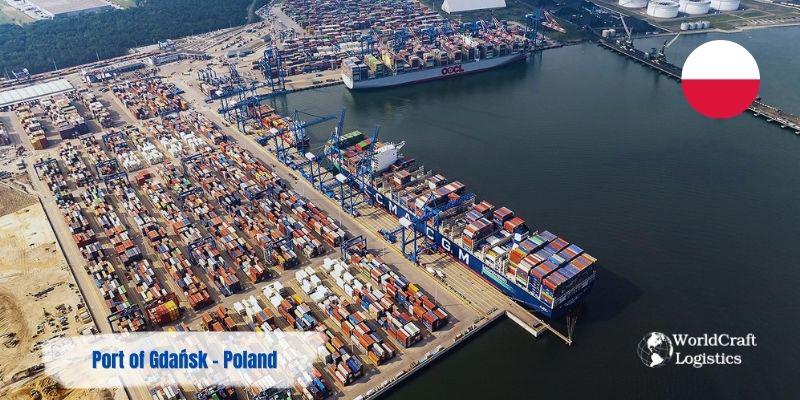
The Port of Gdańsk, located on the Baltic Sea in northern Poland, is one of the largest and most important ports in the Baltic region. It serves as a major gateway for trade between Poland and global markets, handling a diverse range of cargo and playing a crucial role in the regional economy.
Key features of the Port of Gdańsk include:
✔️ Annual Cargo Tonnage: 81 million tons.
✔️ Strategic Location: On the southern coast of the Baltic Sea, linking Europe and the Baltic region.
✔️ Diverse Cargo Handling: Handles containers, bulk goods (coal, grain, ores), general cargo, and liquid bulk (chemicals, petroleum).
✔️ Deepwater Facilities: Equipped with deep water berths and modern facilities for large vessels, including container ships and bulk carriers.
✔️ Connectivity: Strong road, rail, and inland waterway links for efficient goods movement within Poland and beyond.
✔️ Economic Importance: A key asset for Poland, supporting manufacturing, energy, and logistics, and contributing significantly to the national economy.
✔️ Expansion and Development: Ongoing projects to increase capacity, modernize infrastructure, and improve efficiency.
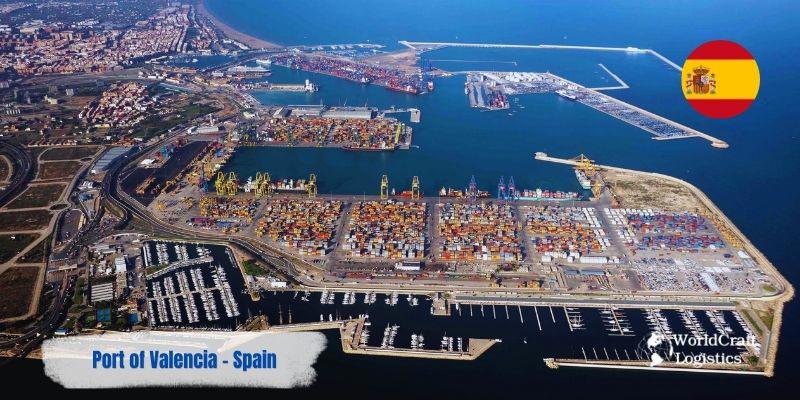
The Port of Valencia, located on the eastern coast of Spain, is one of the busiest and most important ports in the Mediterranean. It serves as a key gateway for trade between Europe, the Americas, Africa, and Asia, handling a significant volume of container traffic. The port is renowned for its modern infrastructure, efficiency, and extensive connectivity.
Key features of the Port of Valencia include:
✔️ Annual Cargo Tonnage: 76.7 million tons.
✔️ Strategic Location: On the Mediterranean Sea, crucial for international trade between Europe and other continents.
✔️ Container Handling: Spain’s leading container port and a top Mediterranean port, with advanced terminals for large vessels and high volumes.
✔️ Connectivity: Excellent road, rail, and inland network connections for efficient distribution across Spain and Europe.
✔️ Diverse Cargo: Handles containers, bulk goods, vehicles, and general cargo, supporting various industries.
✔️ Economic Impact: Major contributor to Spain’s economy, supporting manufacturing, logistics, and trade.
✔️ Sustainability and Innovation: Focuses on green technologies and digital solutions for efficiency and reduced environmental impact.
✔️ Expansion and Development: Ongoing investments to expand capacity, modernize facilities, and enhance connectivity.
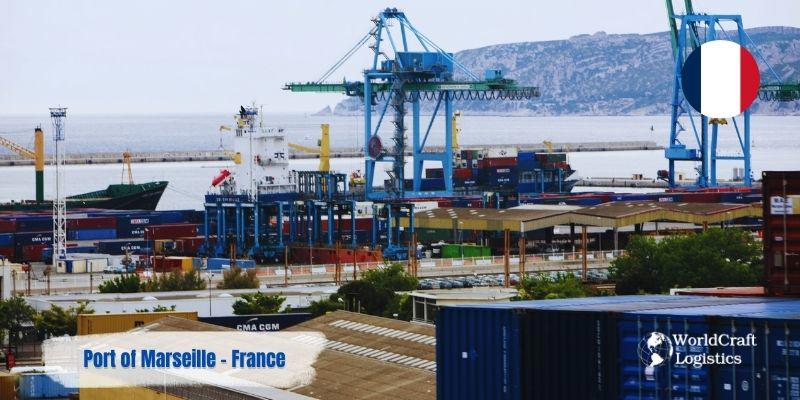
The Port of Marseille, located on the Mediterranean coast in southern France, is one of the largest and most significant ports in the Mediterranean and Europe. Also known as the Port of Marseille-Fos, it serves as a vital gateway for trade between Europe and the rest of the world, particularly North Africa, Asia, and the Americas.
Key features of the Port of Marseille include:
✔️ Annual Cargo Tonnage: 72 million tons.
✔️ Strategic Location: On the Mediterranean Sea, connecting Europe with North Africa, the Middle East, and beyond.
✔️ Diverse Cargo Handling: Handles containers, liquid bulk (oil, chemicals), dry bulk (minerals, grains), general cargo, and vehicles.
✔️ Energy Hub: Key energy port for Europe’s oil imports, with facilities for refining, storage, and distribution.
✔️ Connectivity: Strong road, rail, and inland waterway links for efficient cargo movement to major centers.
✔️ Economic Impact: Major contributor to France’s economy, supporting energy, logistics, and manufacturing sectors.
✔️ Innovation and Sustainability: Focused on green technologies and digital solutions for efficiency and reduced environmental impact.
✔️ Expansion and Development: Ongoing projects to expand capacity, modernize infrastructure, and enhance services.
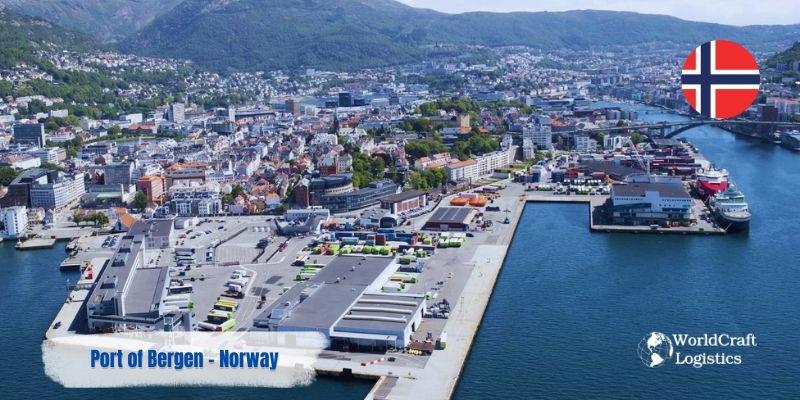
The Port of Bergen, located on the western coast of Norway, is one of the country's most important and historic ports. Known for its strategic position in the North Sea, the port plays a vital role in Norway's maritime activities, particularly in the fishing industry, offshore oil and gas, and tourism.
Key features of the Port of Bergen include:
✔️ Annual Cargo Tonnage: 67.9 million tons.
✔️ Strategic Location: On Norway's western coast, providing access to the North Sea and North Atlantic, key for regional maritime traffic.
✔️ Fisheries Hub: Central to Norway's fishing industry, handling significant volumes of seafood for global export.
✔️ Offshore Industry Support: Critical base for offshore oil and gas, supporting exploration, drilling, and production in the North Sea.
✔️ Cruise Tourism: A popular port for cruise ships, attracting tourists to Norway’s fjords and scenic landscapes.
✔️ Connectivity: Well-connected via road, rail, and air for efficient movement of goods and passengers.
✔️ Economic Significance: Major economic driver for western Norway, supporting fishing, energy, logistics, and tourism.
✔️ Environmental Focus: Committed to sustainability with green technologies and practices in line with Norway’s environmental regulations.
✔️ Expansion and Development: Ongoing projects to enhance infrastructure, capacity, and services.
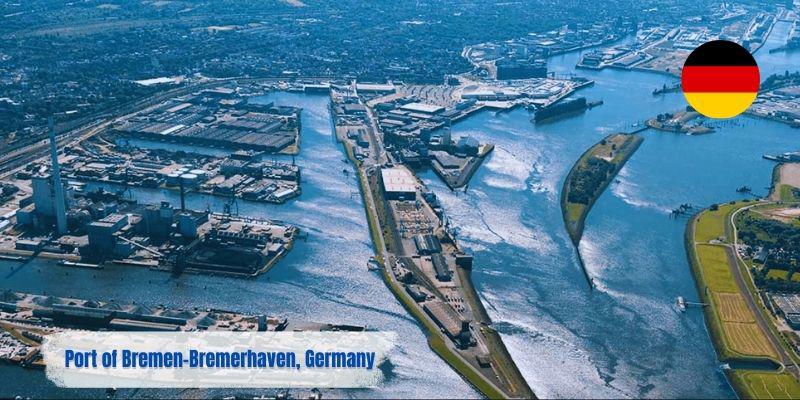
The Port of Bremen-Bremerhaven is a major seaport located in northern Germany. It is one of the largest ports in Europe and serves as a crucial hub for maritime trade. The port’s strategic location provides excellent access to the North Sea and key shipping routes, making it a central point for trade between Europe and other global markets.
✔️ Annual Cargo Tonnage: ~67.6 million tons.
✔️ Strategic Location: Positioned on Germany's North Sea coast, serving as a crucial gateway for European and global trade.
✔️ Container Handling: One of Europe's largest container ports, with deepwater terminals that accommodate the world’s largest container ships.
✔️ Diverse Cargo: Handles a wide range of cargo, including containers, vehicles, bulk goods, and breakbulk.
✔️ Connectivity: Excellent connections to road, rail, and inland waterways, facilitating efficient cargo distribution throughout Europe.
✔️ Economic Impact: A major economic driver in Germany, supporting industries such as logistics, automotive, and manufacturing.
✔️ Sustainability Efforts: Committed to reducing environmental impact with green technologies and sustainable practices.
✔️ Expansion and Development: Continuous investments to enhance port infrastructure and increase handling capacity.
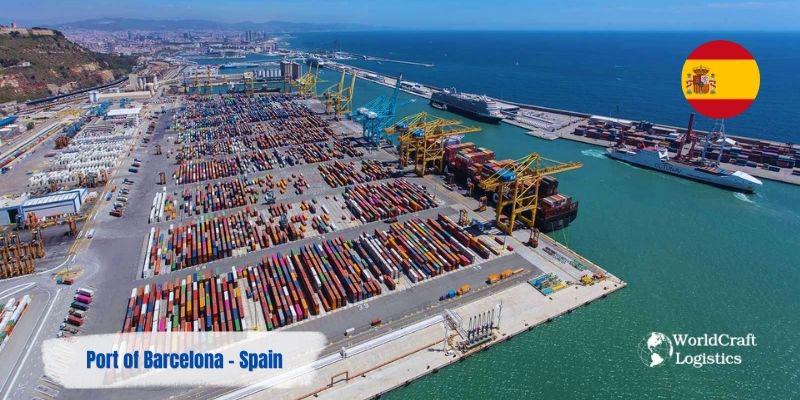
The Port of Barcelona, located on the northeastern coast of Spain along the Mediterranean Sea, is one of the largest and most important ports in Europe. It serves as a critical hub for maritime trade, tourism, and logistics, connecting Spain to global markets and playing a vital role in the regional economy.
Key features of the Port of Barcelona include:
✔️ Annual Cargo Tonnage: 64 million tons.
✔️ Strategic Location: On the Mediterranean coast, a key gateway for trade between Europe, North Africa, Asia, and the Americas.
✔️ Diverse Cargo Handling: Manages containers, liquid bulk (oil, chemicals), dry bulk, vehicles, and general cargo.
✔️ Cruise Terminal: A leading European cruise port, handling millions of passengers annually and serving as a major departure point for Mediterranean cruises.
✔️ Connectivity: Well-connected via Spain’s road, rail, and air networks for efficient movement of goods and passengers.
✔️ Economic Impact: A major economic driver for the region, supporting logistics, manufacturing, tourism, and trade.
✔️ Innovation and Sustainability: Focuses on digital technologies and sustainable practices to improve efficiency and reduce environmental impact.
✔️ Expansion and Development: Investments aim to expand capacity, modernize facilities, and enhance services.
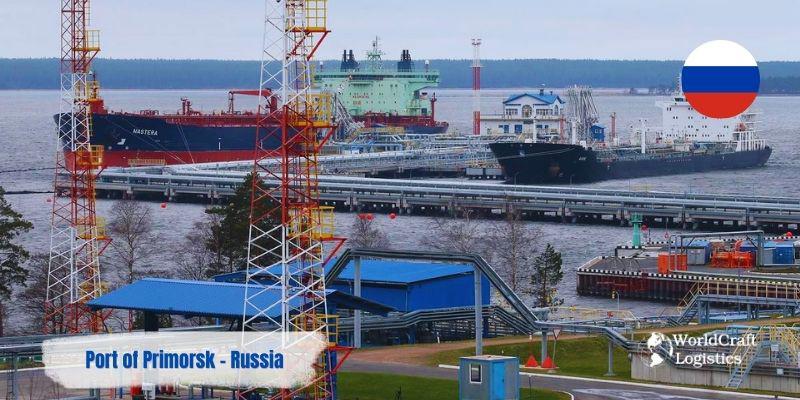
The Port of Primorsk, located on the Gulf of Finland in northwest Russia, is a major seaport specializing primarily in the export of oil and petroleum products. It plays a crucial role in Russia's energy exports, serving as one of the country's largest oil shipment terminals.
Key features of the Port of Primorsk include:
✔️ Annual Cargo Tonnage: 63.1 million tons.
✔️ Strategic Location: On the Baltic Sea near St. Petersburg, crucial for accessing European markets and exporting Russian oil to the West.
✔️ Energy Export Hub: A primary oil export terminal for Russia, handling significant volumes of crude oil and petroleum products.
✔️ Deepwater Facilities: Equipped with deep water berths for large oil tankers, facilitating efficient cargo operations.
✔️ Advanced Infrastructure: Modern facilities for safe and efficient oil handling, including storage tanks, pipelines, and loading terminals.
✔️ Economic Importance: Key node in Russia’s energy export infrastructure, significantly contributing to the national economy.
✔️ Environmental and Safety Standards: Adheres to strict standards to minimize risks and maintain ecological safety in the Baltic Sea.
✔️ Expansion and Development: Ongoing efforts to expand and modernize facilities to increase capacity and meet global oil market demands.
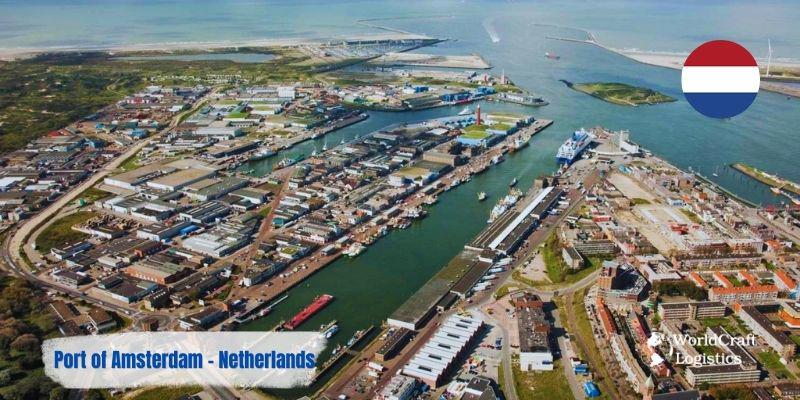
The Port of Amsterdam, located in the Netherlands, is one of Europe’s largest seaports and a key hub for international trade. The port serves as a major gateway for goods entering and leaving Europe, with a focus on sustainability and innovation.
Key features of the Port of Amsterdam include:
✔️ Annual Cargo Tonnage: 63 million tons.
✔️ Strategic Location: Northwest Netherlands, with direct access to the North Sea via the North Sea Canal, crucial for European markets.
✔️ Diverse Cargo Handling: Handles liquid bulk (oil, chemicals), dry bulk (coal, agribulk, minerals), containers, general cargo, and is a major center for cocoa and coffee imports.
✔️ Energy and Chemicals Hub: Key facility for storing and processing oil, biofuels, and chemicals.
✔️ Sustainability Initiatives: Focuses on green energy, circular economy practices, and reducing carbon footprint, including shore power for ships and sustainable logistics.
✔️ Connectivity: Well-connected via roads, railways, and inland waterways for efficient continental transport.
✔️ Economic Significance: Major economic driver in the Netherlands, supporting logistics, manufacturing, and energy sectors.
✔️ Cruise Terminal: Popular for cruise ships, enhancing tourism and local economy.
✔️ Expansion and Development: Ongoing infrastructure and technology investments to boost capacity, efficiency, and global competitiveness.
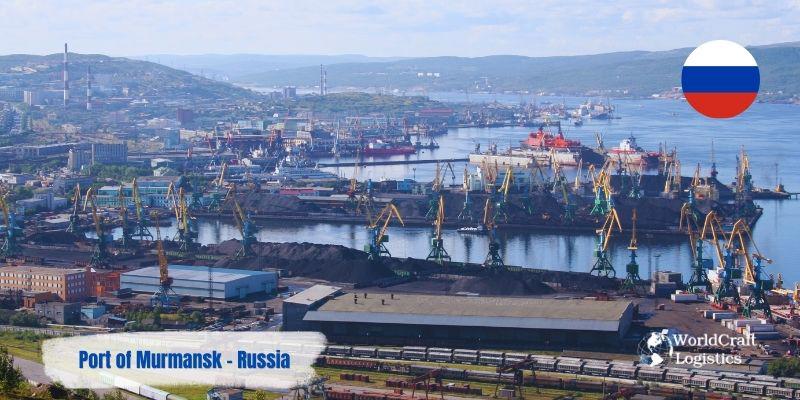
The Port of Murmansk, located on the Kola Bay in northwest Russia, is one of the country’s most significant ice-free ports. Situated within the Arctic Circle, it plays a vital role in Russia's maritime trade, particularly for industries related to natural resources and the Arctic region.
Key features of the Port of Murmansk include:
✔️ Annual Cargo Tonnage: 57.8 million tons.
✔️ Strategic Arctic Location: On the Barents Sea, ice-free year-round, crucial for Arctic Ocean access and the Northern Sea Route between Europe and Asia.
✔️ Natural Resource Exports: Key hub for Russia’s coal, iron ore, and oil exports, handling significant bulk cargo.
✔️ Ice-Free Port: Operates year-round without icebreaking, ensuring reliable Arctic and international trade.
✔️ Military and Strategic Importance: Serves as a strategic naval base, vital for Russia's military and defense in the Arctic.
✔️ Connectivity: Connected to the Russian railway network for efficient goods transport and Arctic exploration support.
✔️ Economic Role: Significant contributor to the regional economy, supporting mining, energy, and logistics, and Arctic development.
✔️ Expansion and Development: Ongoing modernization and capacity expansion to enhance global shipping role, with growing interest in Arctic routes.
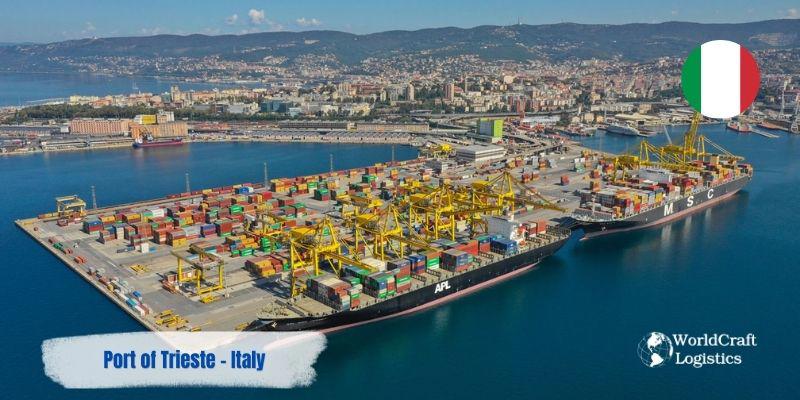
The Port of Trieste, located in northeastern Italy on the Adriatic Sea, is one of the country's most important seaports and a critical gateway for trade between Europe and Asia. Known for its strategic position and deepwater facilities, the port plays a key role in international logistics and trade.
Key features of the Port of Trieste include:
✔️ Annual Cargo Tonnage: 55.6 million tons.
✔️ Strategic Location: At the northern tip of the Adriatic Sea, crucial for trade between Europe, Asia, and the Mediterranean.
✔️ Deepwater Port: Accommodates large vessels, including ultra-large container ships and oil tankers, key for container traffic and energy imports.
✔️ Energy Hub: Major entry point for oil and petroleum products, supporting the Transalpine Pipeline to Austria and Germany.
✔️ Multimodal Connectivity: Connected to European road, rail, and inland waterway networks, and a key entry point for the New Silk Road.
✔️ Economic Significance: Vital to Italy’s economy, supporting manufacturing, logistics, and energy; major transshipment hub.
✔️ Free Port Status: Benefits from customs-free storage and handling, attracting international trade and logistics companies.
✔️ Sustainability Initiatives: Focused on green energy and modern infrastructure to reduce environmental impact.
✔️ Expansion and Development: Investments in capacity expansion, facility modernization, and enhanced connectivity to stay competitive.
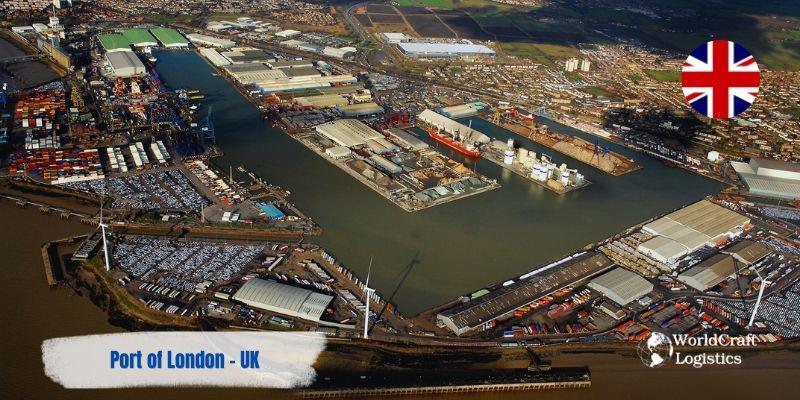
The Port of London, located along the River Thames in the United Kingdom, is one of the country’s oldest and most historically significant ports. It serves as a key hub for trade in the UK, handling a diverse range of cargo and supporting various industries in London and the southeast of England.
Key features of the Port of London include:
✔️ Annual Cargo Tonnage: 51.6 million tons.
✔️ Strategic Location: On the River Thames, providing direct access to London and surrounding regions.
✔️ Diverse Cargo Handling: Handles containers, bulk goods (aggregates, grain), liquid bulk (petroleum, chemicals), general cargo, and building materials for construction.
✔️ Multi-Terminal Operation: Includes over 70 wharves and terminals along the Thames, with key terminals like Tilbury for containers and specialized facilities for oil, vehicles, and bulk commodities.
✔️ Connectivity: Well-connected to UK road and rail networks, facilitating efficient distribution to London and beyond.
✔️ Economic Impact: Crucial for the UK economy, supporting logistics, manufacturing, and retail; significant regional employment contributor.
✔️ Sustainability Initiatives: Focuses on reducing emissions, improving energy efficiency, and developing green logistics solutions.
✔️ Expansion and Development: Ongoing investments to expand capacity, modernize infrastructure, and enhance connectivity.
Historical Significance: One of the world’s oldest ports, with a long history of trade and commerce.
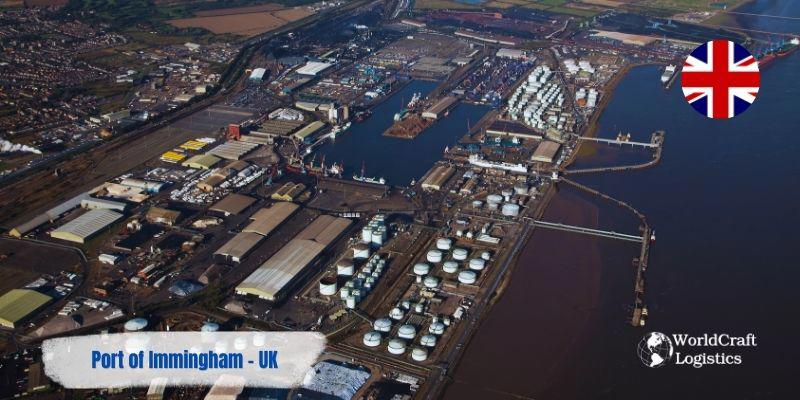
The Port of Immingham, located on the east coast of England along the Humber Estuary, is the largest port by tonnage in the United Kingdom. It plays a critical role in the UK's trade and logistics, handling a wide variety of cargo types and supporting key industries.
Key features of the Port of Immingham include:
✔️ Annual Cargo Tonnage: 50.2 million tons.
✔️ Strategic Location: On the Humber Estuary, providing direct access to the North Sea, crucial for UK-Europe trade and international markets.
✔️ Cargo Diversity: Handles bulk goods (coal, biomass, iron ore), liquid bulk (oil, chemicals), Ro-Ro cargo, and containers. Notably supports the energy sector with coal and petroleum imports.
✔️ Energy Hub: Key for UK’s energy sector, handling coal imports, oil, gas supplies, and biomass for renewable energy.
✔️ Connectivity: Well-connected to UK road and rail networks for efficient goods transport. Close to major motorways and rail lines.
✔️ Economic Importance: The UK’s busiest port by tonnage, essential for energy, manufacturing, and logistics, supporting the Midlands and beyond.
✔️ Modern Infrastructure: Features deep water berths, advanced terminals, and extensive storage facilities.
✔️ Environmental Initiatives: Focuses on reducing environmental impact through green technologies, cleaner energy sources, and emission reduction.
✔️ Expansion and Development: Ongoing investments in capacity, infrastructure upgrades, rail and road improvements, and new facilities.
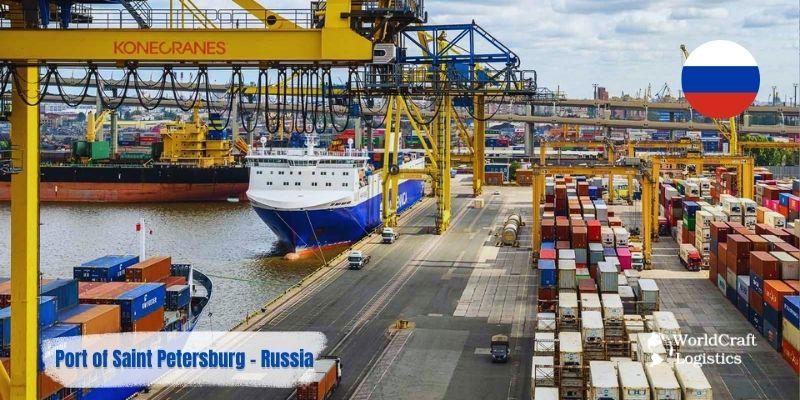
The Port of Saint Petersburg, located on the Neva River in the Gulf of Finland, is Russia's largest port on the Baltic Sea and one of the country's most important maritime hubs. It serves as a key gateway for trade between Russia and Europe, handling a diverse range of cargo.
Key features of the Port of Saint Petersburg include:
✔️ Annual Cargo Tonnage: 49.6 million tons.
✔️ Strategic Location: On the Baltic Sea, crucial for Russia’s trade with Northern and Western Europe.
✔️ Diverse Cargo Handling: Manages containers, bulk goods (coal, fertilizers, grains), liquid bulk (oil, chemicals), general cargo, and vehicles. Key hub for importing consumer goods and machinery into Russia.
✔️Container Traffic: Leading port for containerized goods, essential for Russia’s manufacturing and retail supply chains.
✔️ Cruise and Passenger Terminal: Major destination for cruise ships and international travelers visiting Saint Petersburg.
✔️ Connectivity: Well-connected to Russia’s road, rail networks, and inland waterways for efficient goods transport.
✔️ Economic Significance: Vital to Russia’s economy, supporting logistics, manufacturing, and trade. Major entry and exit point for diverse goods.
✔️ Environmental Initiatives: Focused on waste management, emission reduction, and sustainability improvements.
✔️ Expansion and Development: Ongoing upgrades to container terminals, handling facilities, and berths for larger vessels.
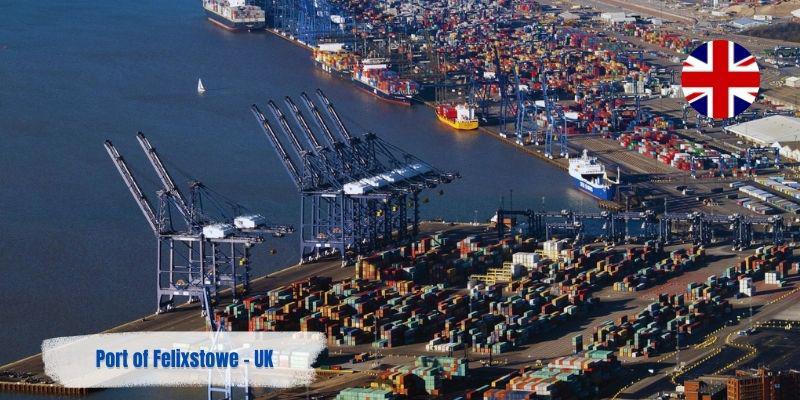
The Port of Felixstowe is the largest container port in the United Kingdom and one of the busiest in Europe. Located on the east coast of England in Suffolk, it serves as a major gateway for the UK’s trade, handling a significant portion of the country's containerized cargo. The port has advanced infrastructure and facilities, including deep-water berths that accommodate the largest container ships in the world.
Key features of the Port of Felixstowe include:
✔️ Annual Cargo Tonnage: ~48 million tons.
✔️ Strategic Location: On England's east coast, providing key access to the North Sea and global markets.
✔️ Container Handling: The UK’s largest container port, handling nearly half of the nation’s containerized trade with deepwater berths for the world’s largest ships.
✔️ Connectivity: Excellent road and rail links to major logistics hubs across the UK.
✔️ Economic Importance: Vital to the UK’s economy, supporting manufacturing, retail, and logistics sectors.
✔️ Modern Infrastructure: Features state-of-the-art facilities and advanced port technology.
✔️ Sustainability Initiatives: Focused on energy efficiency, emission reduction, and green technologies.
✔️ Expansion and Development: Ongoing investments to increase capacity and upgrade infrastructure.
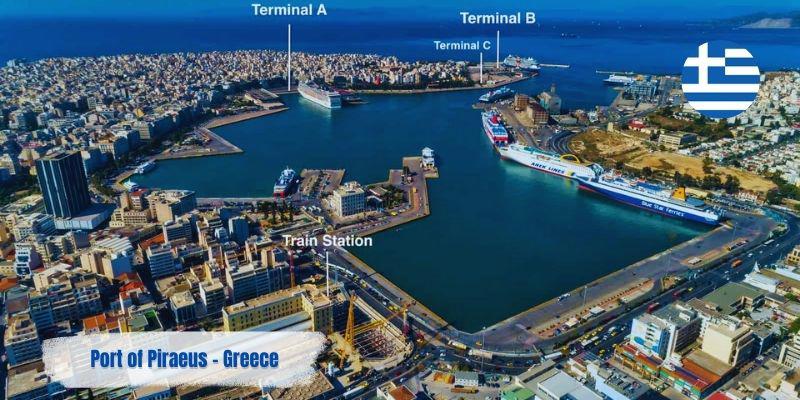
The Port of Piraeus is the largest and busiest port in Greece, located near Athens on the Saronic Gulf. It is one of the most significant ports in the Mediterranean and a key gateway for maritime trade between Europe, Asia, and the Middle East. The port is divided into several terminals, each specialized in different types of cargo and passenger services, including container shipping, cruise ships, and ferries.
✔️ Annual Cargo Tonnage: 47.4 million tons.
✔️ Strategic Location: Near Athens on the Aegean Sea, the port is a key gateway for trade between Europe, Asia, and Africa.
✔️ Diverse Cargo: Handles containers, vehicles, and bulk goods, serving as a major transshipment hub in the Mediterranean.
✔️ Container Traffic: Greece's largest port, crucial in the global supply chain.
✔️ Cruise Terminal: A major hub for cruise ships and ferry services.
✔️ Connectivity: Well-connected to Greece's road and rail networks.
✔️ Economic Role: Vital to Greece's economy, supporting shipping, logistics, and tourism.
✔️ Sustainability: Investing in green technologies and environmental protection.
Worldcraft Logistics’ updated list highlights some of the largest and most important ports in Europe, each playing a vital role in global trade and the regional economy. These ports are not only key points of trade, but also examples of continued advances in maritime technology and infrastructure. From established hubs such as Rotterdam and Hamburg to rapidly developing ports such as Trieste and Gdańsk, Europe remains a leading hub in the global maritime industry. Continuous investments in expansion and modernization ensure that these ports will continue to be vital links in the global supply chain, contributing to the prosperity and sustainable development of the region.
SEO
Digital Marketing/SEO Specialist
Simon Mang is an SEO and Digital Marketing expert at Wordcraft Logistics. With many years of experience in the field of digital marketing, he has shaped and built strategies to effectively promote Wordcraft Logistics' online presence. With a deep understanding of the logistics industry, I have shared more than 500 specialized articles on many different topics.

Hot News
08/05/2024
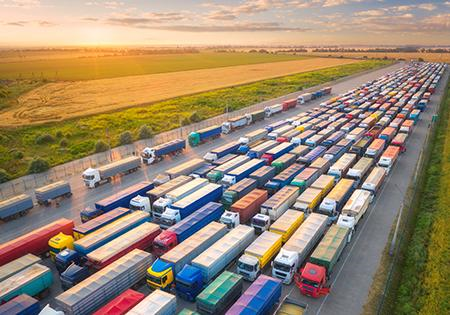
Hot News
02/23/2023

Hot News
02/23/2023

Hot News
02/06/2023
Hot News
02/07/2023